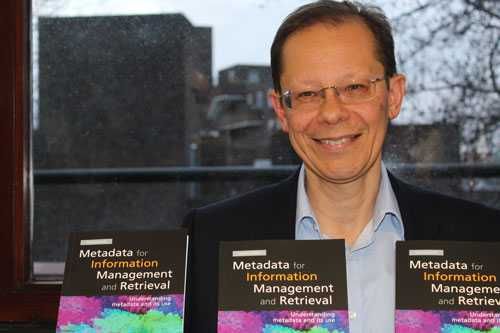
Based on a talk to the Singapore chapter of the International Society for Knowledge Organization (ISKO). A recording of the talk is available at: http://www.iskosg.org/magic_with_metadata_haynes.html
Origins of metadata
Metadata has been around a long time – from the first lists of clay tablets in Mesopotamia to the first formal catalogue of scrolls in the great library of Alexandria more than 2,000 years ago (Gartner, 2016). The first use of the term ‘meta-data’ was in a PhD thesis in the 1970s ‘An infological approach to data bases’ (Sundgren, 1973).
Pervasiveness of metadata
We come across metadata in many aspects of our personal and professional life. For instance, it is embedded in the transactions in online shopping. It also leaves an audit trail whenever we make a phone call. This was dramatically demonstrated by the Snowden revelations (Greenwald, 2013). Most commonly it is used for tracking our online behaviour by use of cookies. Thus it is the basis for analysis of big data used for research and prediction.
Purposes of metadata
Viewing metadata by its purposes, can give us a better perspective on how best to manage and utilize it. I illustrate this in my book (Haynes, 2018), where I identify six purposes of metadata:
Describing
What resources are we handing? Are they records, documents, archival materials, digital materials? What role do they have in the organization (e.g. proof of ownership, operational data, procedural information, customer information, commercial transactions). The information resource may itself have a monetary value. A description forms part of the record of its existence.
Retrieving
Who is going to use the resource described? Who is allowed access? What changes can they make? What criteria will they use to search for the item? Is there a standard way of describing the item?
Managing
How long should a document be kept for? What security needs to be in place? Can you detect any amendments made? Who has read the document?
Owning
Does copyright apply to the document? What other rights are important (e.g. Freedom of Information)? Are there privacy (data protection) regulations? If the digital item has a value, how do you track usage?
Transacting
eGovernment and eCommerce activities depend on metadata standards to allow interoperation between systems. This means that the information itself has to include structured metadata to allow different systems to process it appropriately.
Regulating
Information governance is high on the information management agenda at the moment. Compliance with Freedom of Information and Data Protection laws is a starting point. Industry standards for quality and security also apply as part of risk management. The metadata itself may be used to control access – important for privacy and security. Audit trails of metadata also allow investigators to see who has accessed or changed data.
Information and Knowledge Organization
Edinburgh Napier University is introducing a module on Information and Knowledge Organization in January 2022, which will be available to MSc students in the Business Information Technology programme.
In my next blog I look at some of the challenges of managing metadata and identify potential solutions.
References and further information
Gartner, R. (2016) Metadata: shaping knowledge from antiquity to the semantic web. Cham, Switzerland: Springer International Publishing. doi: 10.1007/9783319408934.
Greenwald, G. (2013) ‘NSA Collecting Phone Records of Millions of Verizon Customers Daily’, The Guardian, 6 June. Available at: http://www.theguardian.com/world/2013/jun/06/nsa-phone-records-verizon-court-order (accessed 2014-07-07).
Haynes, D. (2018) Metadata for Information Management and Retrieval: understanding metadata and its use. 2nd edn. London: Facet Publishing.
International Society for Knowledge Organization. ISKO website. www.isko.org (accessed 2021-10-22)
Sundgren, B. (1973) An infological approach to data bases. University of Stockholm.

Leave a Reply